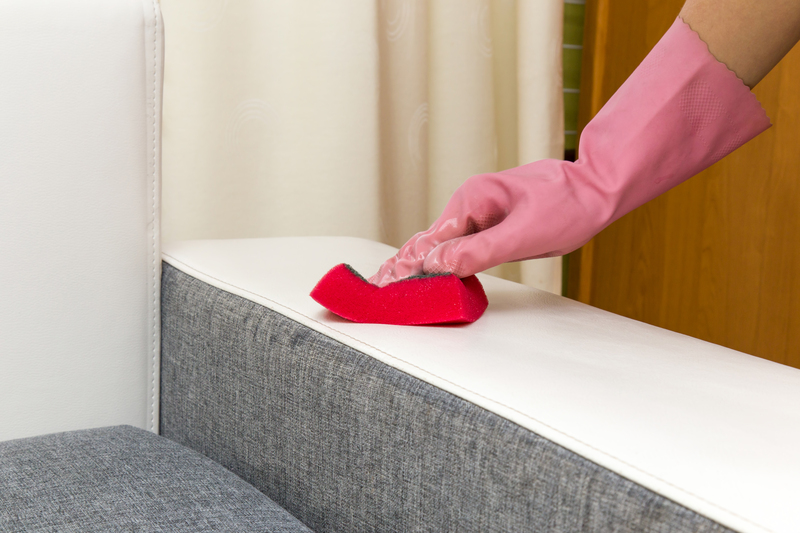Repairing Fabric with Bleach Stains
Posted on 09/10/2025
Repairing Fabric with Bleach Stains
Bleach stains on fabric can be incredibly frustrating, especially on favorite garments or textiles that have sentimental value. Unlike other stains, bleach removes the color from the fabric, making the repair process unique. This article will guide you through effective methods for repairing fabric stained by bleach, offering tips, pros and cons, and essential takeaways.
Understanding Bleach Stains
Bleach stains occur when the chemicals in bleach react with the dye in the fabric, effectively removing the color. This creates a challenge because the original dye has been removed, not just covered up. Here are a few methods to repair bleach stains:

Method 1: Dying the Fabric
One of the most effective solutions is to re-dye the fabric. This can restore the uniform color and conceal the bleach stains entirely.
1. **Choose the Right Dye**: Select a fabric dye that matches the original color of the fabric. Brands like Rit Dye offer a broad spectrum of colors.
2. **Preparation**: Ensure the fabric is clean and free from any other chemicals or residues.
3. **Dyeing Process**: Follow the instructions on the dye packaging. Most dyes require you to dissolve them in hot water and submerge the fabric for a specified period.
4. **Rinse and Dry**: Rinse the fabric until the water runs clear, then allow it to air dry.
Method 2: Fabric Paints and Markers
For smaller bleach stains, fabric paints or markers can be an ideal solution.
1. **Selection**: Choose a fabric paint or marker that closely matches the original fabric color.
2. **Application**: Gently apply the paint or marker on the bleach-stained area. It's often best to start from the edges of the stain and work inward.
3. **Drying**: Allow the paint or marker to dry completely. This can usually take a few hours to overnight.
4. **Heat Setting**: Some fabric paints need heat setting to become permanent. Follow the manufacturer's instructions for this step.
Method 3: Patch and Embellish
If the bleach stain is on a specific area like a sleeve or pocket, you can opt to cover it with a patch or embellishment.
1. **Choose Your Patch**: Pick a patch that complements the fabric aesthetically. You can use fabric patches, embroidered patches, or even create your own.
2. **Sewing or Iron-On**: If using an iron-on patch, simply follow the instructions. For sew-on patches, use a needle and thread to secure the patch over the stain.
3. **Embellishment Ideas**: Besides patches, you can use beads, sequins, or other embellishments to cover the stained area creatively.
Tips for Preventing Bleach Stains
1. **Spot Test**: Always do a spot test before using bleach on any fabric.
2. **Dilute Properly**: Use bleach in the correct dilution recommended by the manufacturer.
3. **Protective Layers**: Place protective layers like old towels under the fabric being treated to avoid accidental spills.
Pros and Cons of Repairing Bleach Stains
Pros:
- Cost-Effective: Repairing bleach stains is usually cheaper than replacing the entire fabric or garment.
- Creative Solutions: Methods like patches and fabric paint allow for creative personalization.
- Sustainability: Repairing extends the life of the fabric, contributing to environmental sustainability.
Cons:
- Color Match: Finding the exact color match can be challenging and may require experimentation.
- Temporary Solutions: Some methods like using markers or paints might fade over time and need reapplication.
- Time-Consuming: Dyeing and other repair methods can be time-consuming, especially for larger fabrics.

Takeaways
1. **Multiple Methods**: There are various ways to repair bleach stains including dyeing, fabric paints, and patches.
2. **Preparation is Key**: Proper preparation of the fabric and materials ensures better results.
3. **Preventative Measures**: Taking steps to prevent bleach stains can save effort in repairs.
Conclusion
Repairing fabric with bleach stains is entirely possible and often worth the effort, especially when dealing with valued items. Using methods such as dyeing, fabric paints, and creative patches, you can restore the appearance of your fabric effectively. While challenges like color matching and time investment exist, the pros of cost savings and sustainability make it a worthwhile endeavor.
For the best results, always ensure you're working with the appropriate materials and follow the tips provided. In the end, repairing fabric can be a rewarding process, giving new life to textiles that might otherwise be discarded.









